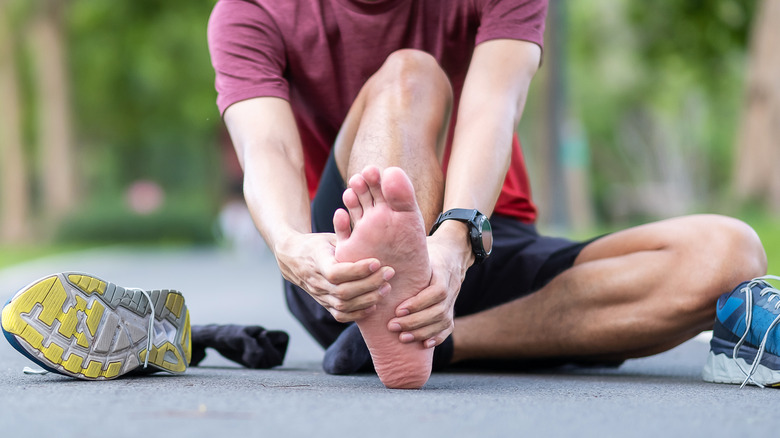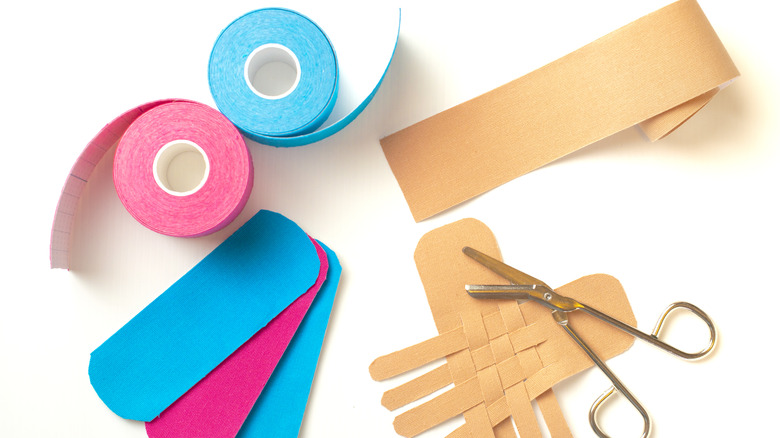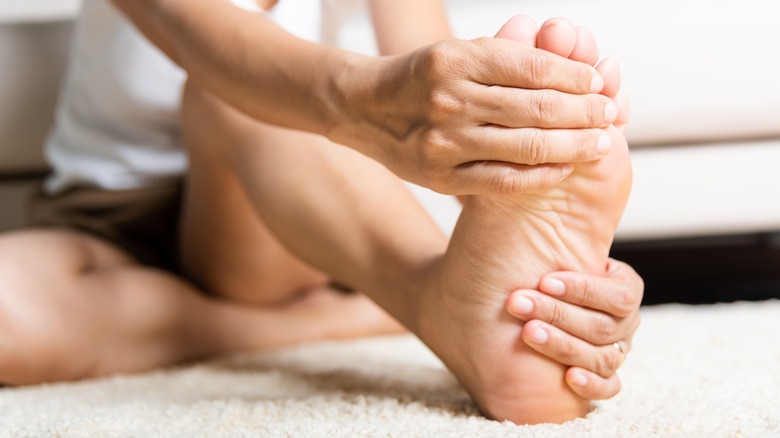How To Use Kinesiology Tape For Plantar Fasciitis Pain
The plantar fascia is a ligament under your foot that connects your toes to your heel. Because it gives support to your foot's arch, it can get inflamed when you put sudden repetitive stress on your foot, such as walking or running. This is known as plantar fasciitis. You can also get plantar fasciitis if you stand a lot during the day wearing unsupportive shoes.
You might also be more prone to plantar fasciitis if you're female, between 40 and 60 years old, or have high or low arches. People who have tight Achilles tendons or unusual walk patterns are also more likely to get plantar fasciitis. You're also more likely to develop plantar fasciitis if you're obese or if you wear high-heeled shoes often.
At first, you could feel plantar fasciitis near your heel or under your arch, and it gradually gets worse. You'll feel it worse when you get out of bed in the morning or after you've been off your feet for a while. Sometimes mild activity will help alleviate the pain, but too much activity can make it feel worse.
To help relieve some of your plantar fasciitis pain, you can use kinesiology tape. Kinesiology tape is more flexible than the white athletic tape you might see on athletes. This tape can help improve the circulation in your plantar fascia and help ease the pain while you stretch.
How to apply kinesiology tape to your plantar fascia
First off, make sure your foot and lower leg are clean so the kinesiology tape can properly adhere to your skin. You'll need two pre-cut strips, and it's best to do this while seated. According to Performance Health Academy, you'll need to anchor the first strip on the ball of your foot just before your toes. Be sure to seal the first end of the strip to your foot. While flexing your foot, pull the tape slightly — about a 25% stretch — and guide it along the bottom of your foot. Stop for a moment at the heel to seal the tape there, then continue at a 25% stretch up your Achilles tendon to the back of the calf. Leave a little room for the anchor at the second end. Remember that the anchors have zero stretch on the tape. Rub this first piece several times to make sure the adhesive sticks to the skin.
The second piece of kinesiology tape starts on the front of the shin just outside and below the knee. Anchor the first end there, then use about 25% stretch to guide the tape across the shin and down the leg so it crosses inside the ankle. Continue to apply the tape under the arch and anchor the opposite end there. Seal this piece of tape to the skin, making sure there aren't any loose edges.
Additional ways to treat plantar fasciitis pain
Although kinesiology tape might feel good, you'll also need to incorporate some stretching to help the plantar fascia heal. According to the Foot & Ankle Center of Washington, because plantar fasciitis can make getting out of bed painful, you can stretch the ligament just before you get up. While holding the base of your toes, pull your toes back towards your shin. Once you feel the plantar fascia stretch, hold this for 10 seconds and repeat 10 times. Do this stretch three times a day, particularly after you've been sitting or lying down for a while.
Because tightness in your Achilles tendon and calves can pull on your plantar fascia, you can roll your calf over a foam roller. You can also massage the arch of your foot by using a frozen bottle of water.
Your doctor might also recommend a night splint combined with other stretching therapies. This allows a gentle stretch of your Achilles and arch while you sleep, and it also prevents you from pointing your foot at night, which contracts the calf muscles and Achilles tendon.



